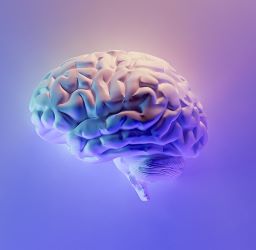News
Contact Us
Western Academy for Advanced ResearchWestern Interdisciplinary Research Building
Western University
London, Ontario
N6A 3K7
wafar@uwo.ca
Connect with us today!


November 10, 2023: Understanding how the brain stores memories
 A central idea in neuroscience is that memories are stored across large groups of neurons. Neurons emit action potentials, or “spikes”, which are brief electrical events that cause communication with other neurons to which they are connected. Even though neuroscientists have been recording spikes for over 150 years, it remains unknown whether neurons communicate through the average rate of their spikes, or through the precise pattern of spikes in time. Nearly all models of memory storage study this process in terms of spike rate, and cannot take precise spike times into account. This is due, in part, to the fact that mathematical approaches to describe spike times are lacking. Because more and more experimental evidence is accumulating for the importance of spike times in sensory and motor systems - such as millisecond-scale spike time patterns in motor cortex that have been the force of muscle output - new mathematical approaches are needed to understand spike-time neural codes.
A central idea in neuroscience is that memories are stored across large groups of neurons. Neurons emit action potentials, or “spikes”, which are brief electrical events that cause communication with other neurons to which they are connected. Even though neuroscientists have been recording spikes for over 150 years, it remains unknown whether neurons communicate through the average rate of their spikes, or through the precise pattern of spikes in time. Nearly all models of memory storage study this process in terms of spike rate, and cannot take precise spike times into account. This is due, in part, to the fact that mathematical approaches to describe spike times are lacking. Because more and more experimental evidence is accumulating for the importance of spike times in sensory and motor systems - such as millisecond-scale spike time patterns in motor cortex that have been the force of muscle output - new mathematical approaches are needed to understand spike-time neural codes.
In a new work recently published in Physical Review E, which covers statistical, nonlinear, biological, and soft matter physics, Federico Pasini and Alexandra Busch introduced a new mathematical approach to study a specific pattern of spike times in the hippocampus, a brain structure that plays a major role in learning and memory. For Dr. Pasini, a pure mathematician with a background in algebra and topology, “it is so fulfilling to see how abstract math techniques have a deep impact on the description of physiologic phenomena. A turning point in this research was realizing that the precise relationship between events in the real world and patterns of spikes in the hippocampus, encoding memories of these events, could be reduced to geometric proportionality relationships. Once we found this link, we were able to use Thales’ intercept theorem, a 2,000-plus-year-old piece of knowledge, to write out precise equations for the spike pattern in this area.”
This work represents a first step for this research team, which is now looking to expand this approach to consider more complex cases. Phase precession - the hippocampal phenomenon considered in this work - is one of the clearest experimental examples of a precise and repeating pattern of spike times. According to Alex Busch, “phase precession was a great first example to understand what is happening in a simple case. Using what we’ve learned in this project, we’re developing new work that extends this approach to more complex, general cases.”
Advances in recording technology now allow neuroscientists to simultaneously record from hundreds or thousands of neurons. These new recordings, made possible by support for neurotechnology through programs such as the BRAIN Initiative, create new opportunities for understanding how millions of neurons work together during sensory perception or memory, but also raise challenges for mathematical analysis. The authors aim to extend this mathematical approach to meet the challenges and opportunities raised by these new recordings in future work.
Preprint link: https://arxiv.org/abs/2211.06692
Read more in the Western News: https://news.westernu.ca/2023/12/new-math-approach-provides-insight-into-memory-formation/
by Alexandra Busch, Contributing Researcher, Mathematics of Neural Networks
Dr. Lyle Muller, Theme Leader/Western Fellow, Mathematics of Neural Networks
Dr. Federico Pasini, Huron University College
This research expands upon knowledge produced by the Mathematics of Neural Networks, the first research theme of the Western Academy for Advanced Research.
Image credit: Milad Fakurian on Unsplash

